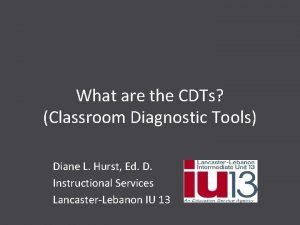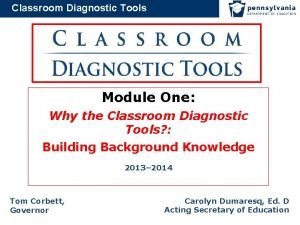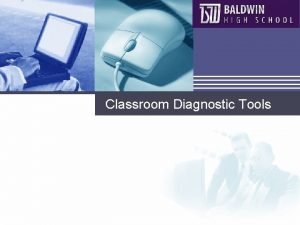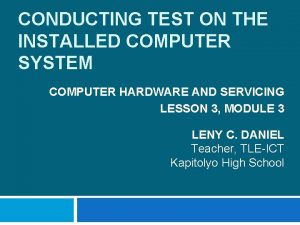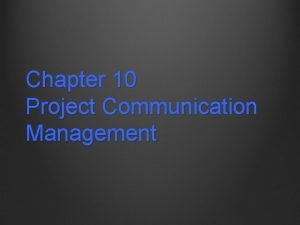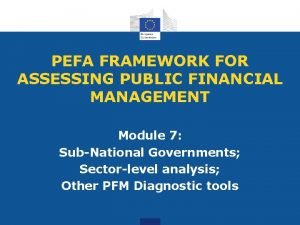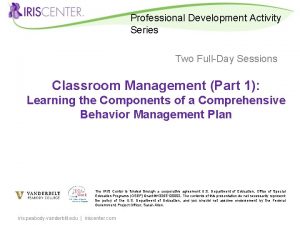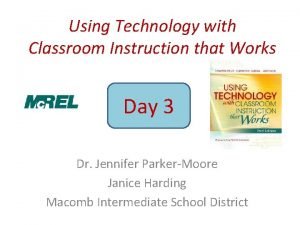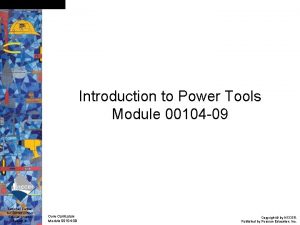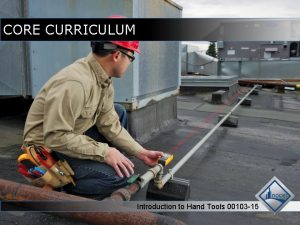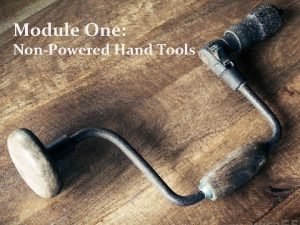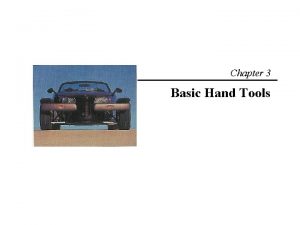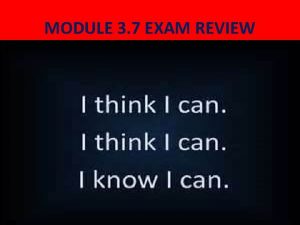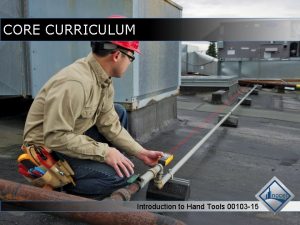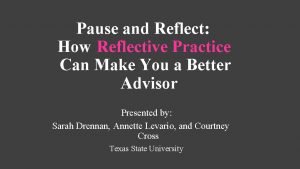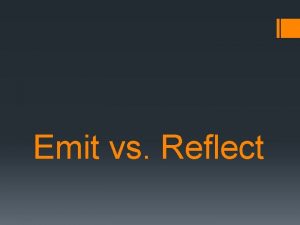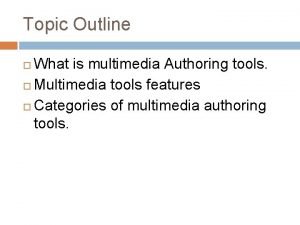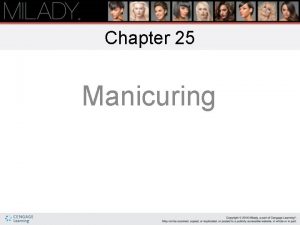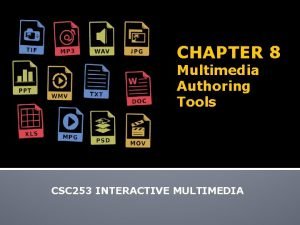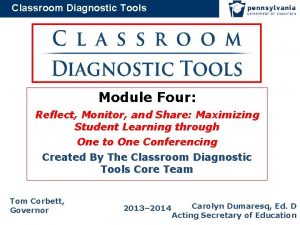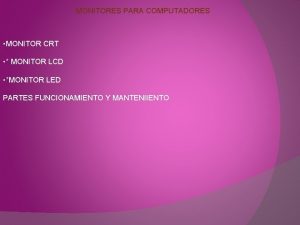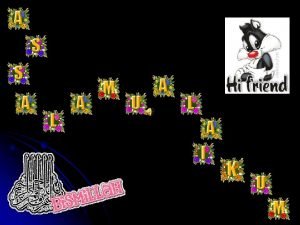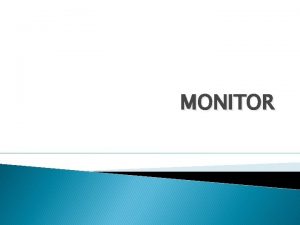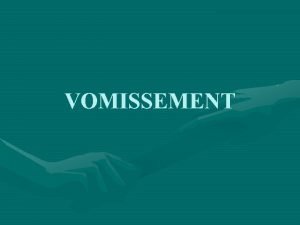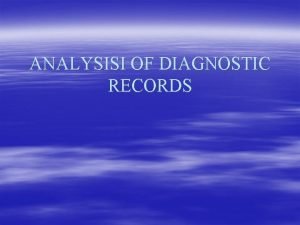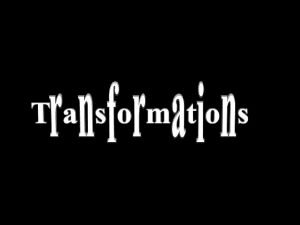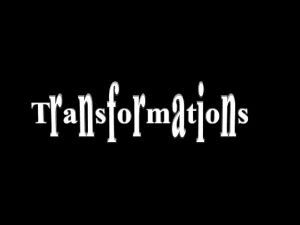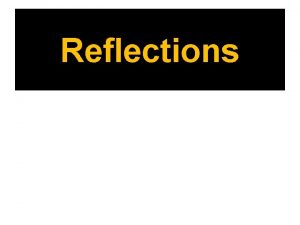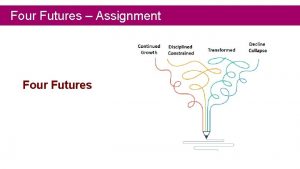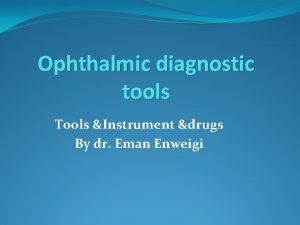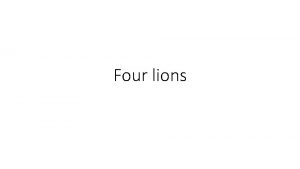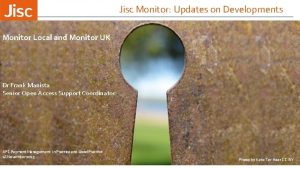Classroom Diagnostic Tools Module Four Reflect Monitor and
























- Slides: 24

Classroom Diagnostic Tools Module Four: Reflect, Monitor, and Share: Maximizing Student Learning through One to One Conferencing Created By The Classroom Diagnostic Tools Core Team Tom Corbett, Governor 2013– 2014 Carolyn Dumaresq, Ed. D Acting Secretary of Education

Classroom Diagnostic Tools What’s in this Module? • Look at the current research findings on feedback and assessment; • Clarify the purpose and value of feedback to learners; • Deepen the understanding of types of feedback; • Analyze feedback statements and discuss ways to use the feedback to guide student learning; and • View and discuss the work of Pennsylvania educators in supporting One-to-One Conferencing 2

Classroom Diagnostic Tools Why should the Classroom Diagnostic Tools be used? Benefits for Students: • • • Provides specific and timely feedback designed to support student learning. Builds efficacy by bringing students into the process of their own learning. Promotes goal setting by involving students in the learning process. Provides students with opportunities to demonstrate their knowledge and skills. Promotes partnering with teachers (e. g. , one-on-one conferencing). Ensures that follow-up instruction is meaningful and aligns with student learning expectations. 3

Classroom Diagnostic Tools Student Shares His Thoughts Regarding Taking the CDTs 4

Classroom Diagnostic Tools Pre-Formative Assessment on Feedback That Moves Learning Forward More Effective Less Effective Feedback 1. Try harder next time. 2. 70% 3. Your position paper argues your position, pro and con, on whether or not a gluten-free bakery can be a successful business venture. What implications can be drawn from your potential findings? 4. You maintained eye contact with the audience throughout your whole presentation. 5. + 6. What you have written is a hypothesis because it is a proposed explanation. You can improve it by writing it as an “if…. . then…. ” statement. 7. B+ Good Work 8. Your performance was strong in tone quality and intonation. You need to work on your rhythm in measures 10 and 14. 9. Your work is consistently above average. 5

Classroom Diagnostic Tools Pre-Formative Assessment on Feedback That Moves Learning Forward (Continued) More Effective Less Effective Feedback 10. You need to do your homework. 11. I noticed that you drew other members of the team into the discussion by saying, “Do you agree? ”, or “What do you think? ” 12. You are so close to proficiency. With a little more work, you should be at a level 3. 13. You made simple mistakes on your timeline. Make sure your time intervals are all the same length! 14. Your thesis statement is clear. Your next step might be to add real details to support it. 15. Messy! 16. You made some errors on your graph. Go back and check the names of your titles, x-axis, and y-axis. 17. Your position paper on Harvesting Rain Water shows technical articles that support the pros on how communities are harvesting drinking water as a resource. Be sure to include evidence that also supports the cons of harvesting drinking water as a resource. 6

Classroom Diagnostic Tools 5 Strategies of Assessment FOR Learning Where the learner is going 1. Clarifying and sharing learning intentions and success criteria (Use examples and models of strong and weak work: Exemplars) Where the learner is right now 2. Engineering effective classroom discussions, activities, and tasks that elicit evidence of learning How to close the gap 3. Activate learners as instructional resources for one another 4. Activate learners as owners of their own learning 5. Provide feedback that moves learning forward (Hattie, 2012) 7

Classroom Diagnostic Tools Four Types of Feedback 8

Classroom Diagnostic Tools Feedback Activity q. Where the learner is going q. Where the learner is right now q. How to close the gap 9

Classroom Diagnostic Tools Four Types of Feedback Motivational Evaluative Descriptive Effective Descriptive What does this type of Feedback provide? • Goal is to make the learner feel good. • Measures with a score or a grade. • Intended to encourage and support the learner. • Summarizes student achievement. • Offers no guidance on how to improve the learner’s reasoning. • No guidance on how to improve. • Student gets the grade; the learning stops (William, p. 123, 2011) • Tells the learner what steps to take to move forward. • Tells the learner what needs to be improved. • Gives guidance on how to improve the learners’ reasoning. • Makes comments about the strengths and weaknesses of a performance. • Makes comments about the work process you observed or recommendations about a work process or study strategy that would help improve the work. • Goal is to internalize the effective feedback. • Intended to be used by the learner to independently move his/her reasoning to the next level. • Makes comments that position the student as the one who chooses to do the work. 10

Classroom Diagnostic Tools Motivational Evaluative Examples • “What powerful words you have used to describe the community! Your words create pictures in the mind of your reader and show what is important to the people who live in this community. ” Examples • “Your work has definitely improved. “ • “I like how you completed the assignment. ” • 73% • “It is obvious you worked hard on this assignment. ” “I appreciate the amount of time and energy you are giving this learning task. ” • • • “You need to try harder. ” • “That’s a good essay. ” • “ You’ve done • Descriptive • “You’ve shown improvement. ” well. ” “ I can see that you are stuck on this question. What might help you? You may want to consider a strategy such as rereading the question and underlining key words or by going back to the text to look for evidence. You decide and I’ll check back with you in a bit. ” “In your essay you have successfully covered the main points related to energy conservation. What could you add to the section on the water conservation to deepen your reader’s understanding of the issue? ” • “Your map legend has all of the required key elements needed to identify the geographical landforms. What narrative descriptions could you include to further inform the reader? ” the shortest one in the class. You didn't put enough in it. ” “Your report is late! What's the matter with you? ” Examples “Most of your spelling is accurate. I found only two errors. See if you can find them. Remember the rules for possessives and plurals. ” • • “Your report was • Four Types of Feedback • “You accurately found the number of students in 4 th grade who said ice cream was their favorite. You now need to divide this number by the total number of students to get the percent who said ice cream was their favorite. ” Effective Descriptive • Examples “I know you set the goal to improve your work with estimation strategies in problemsolving situations. How are you doing with the instructional enrichment pieces you chose? ” • “What a wonderful story of your grandparent’s journey to Canada! Now you need to identify what we can learn from their story about the land, culture and history. Select a graphic organizer to organize and share this information. You might be surprised to see how much good information is in their story!” • “I agree with the pattern that you have identified in the table. I am not convinced that the rule you wrote works for all the values in the table. How could you prove this? ” 11

Classroom Diagnostic Tools Recommendations for One-to-One Conferencing 2013 -2014 • Refer to the Recommendations for One-to-One Conferencing with your Students 12

Classroom Diagnostic Tools Recommendations for One-to-One Conferencing Building Background Knowledge 1. When should one-to-one conferencing take place? 2. When should small group conferencing take place? 3. How will you schedule the conference into your teaching period? How often? 4. Who gets to participate in the conference? 5. What will you discuss? 6. What will you do with the remainder of the students while you are conferencing? 7. How long should a one-to-one conference take? 13

Classroom Diagnostic Tools Recommendations for One-to-One Conferencing Building Background Knowledge 8. How will you schedule opportunities for targeted instruction as a result of setting goals from the conference? 9. How will you and your students know they are progressing? 10. Establish questions, such as the following, to ask the student(s) during conferencing: • When you finished taking the CDT, do you recall an area of need? • Are there tools, like graphic organizers or manipulatives, you could suggest to me that would help you learn? • Is there vocabulary you do not understand? 11. Can you suggest other questions? 14

Classroom Diagnostic Tools Recommendations for One-to-One Conferencing Teacher Implementation Talk to the Text 12/19/2021 15

Classroom Diagnostic Tools Recommendations for One-to-One Conferencing Tips for a Successful One-to-One Conference 12/19/2021 16

Classroom Diagnostic Tools Preparing Students for One-to-One Conferencing 17

Classroom Diagnostic Tools Applying our learning…. Feedback that moves learning forward… Maximizing Learning through One-to-One Conferencing “A Walk-Through” Using the Classroom Diagnostic Tool as the catalyst, let’s watch a few live videos from the Saucon Valley School District located in Hellertown, Pennsylvania. Thanks to teachers, Tori Heffelfinger and Brianne Barona, and their students, and to Stacy Kulics, CDT Core Team Member, and Joana Spinelli, Consultant, both from Colonial IU #20. 18

Classroom Diagnostic Tools Teachers Share Techniques for One-to-One Conferencing 19

Classroom Diagnostic Tools Teacher and Student One-to-One Conferencing with CDT Results: Example One 20

Classroom Diagnostic Tools Teacher and Student One-to-One Conferencing with CDT Results: Example Two 21

Classroom Diagnostic Tools Teacher and Student One-to-One Conferencing with CDT Results: Example Three 22

Classroom Diagnostic Tools Teacher and Student One-to-One Conferencing with CDT Results: Example Four 23

Classroom Diagnostic Tools In Closing… “The greater the challenge, the higher the probability that one seeks and needs feedback, but the more important it is that there is a teacher to provide feedback and to ensure that the learner is on the right path to successfully meet the challenges. ” (Hattie, 2012) “Learning is not always pleasurable and easy; it requires over-learning at certain points, spiraling up and down the knowledge continuum, building a working relationship with others in grappling with challenging tasks – herein lies a major link between challenge and feedback, two of the essential ingredients of learning. ” (Hattie, 2012) “The most powerful single modification that enhances achievement is feedback. ” (Hattie, 1992) 24
 Classroom diagnostic tools
Classroom diagnostic tools Classroom diagnostic tools scoring
Classroom diagnostic tools scoring Classroom diagnostic tools
Classroom diagnostic tools What tool is loopback adapter
What tool is loopback adapter Monitor communications process tools and techniques
Monitor communications process tools and techniques Diagnostic tools for pfm
Diagnostic tools for pfm Smart classroom vs traditional classroom
Smart classroom vs traditional classroom Iris module classroom management
Iris module classroom management C device module module 1
C device module module 1 Tools for classroom instruction that works
Tools for classroom instruction that works Module 4 introduction to power tools test
Module 4 introduction to power tools test Module 3 introduction to hand tools test
Module 3 introduction to hand tools test A tool used to hold objects firmly in place is called
A tool used to hold objects firmly in place is called Struck or hammered tools
Struck or hammered tools Module 3 exam introduction to hand tools answers
Module 3 exam introduction to hand tools answers Module 00104 introduction to power tools
Module 00104 introduction to power tools Module 00103 introduction to hand tools
Module 00103 introduction to hand tools Shape with four sides
Shape with four sides Pause and reflect examples
Pause and reflect examples Emit vs reflect
Emit vs reflect The appropriate cutting tool used in cutting fabrics
The appropriate cutting tool used in cutting fabrics Icon based authoring tools example
Icon based authoring tools example Chapter 25 manicuring
Chapter 25 manicuring What is cutting tools
What is cutting tools Released now multimedia authoring system
Released now multimedia authoring system
